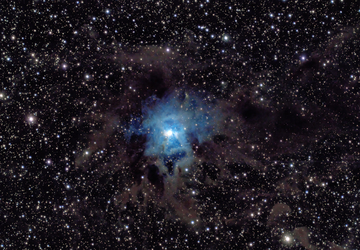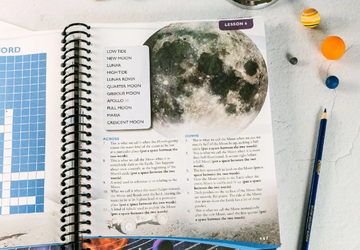How to Learn Basic Astronomy and Stargazing
Have you ever gazed up at the night sky and wondered about the countless stars, planets, and galaxies that twinkle overhead? If you've ever felt that cosmic curiosity, you're in for an extraordinary journey into the world of astronomy and stargazing. Whether you're a complete novice or have dabbled in stargazing before, this comprehensive guide will take you step by step through the celestial wonders above.
1. Know the Night Sky
The night sky, a canvas of stars and constellations, holds stories and mysteries that have fascinated humanity for millennia. Begin your journey by understanding the major constellations, those celestial patterns that grace our night sky. Beyond the Big Dipper, Orion, and Cassiopeia, you'll discover the rich tapestry of the cosmos.
To deepen your knowledge, delve into the mythology and history behind these constellations. Each one has a unique tale that connects us to past cultures. With this added context, your stargazing experiences will come alive with new meaning.

2. Learn the Celestial Objects
The night sky is brimming with celestial treasures waiting to be explored. Binoculars are your passport to a closer look at these wonders. With a simple pair of binoculars, you can marvel at the intricate details of the Moon's craters, witness Jupiter's largest moons orbiting the gas giant, and even spot distant star clusters like the Pleiades.
As your passion deepens, consider investing in a telescope. Telescopes offer a more intimate view of celestial objects, revealing intricate lunar landscapes, the mesmerizing rings of Saturn, and the distant galaxies that dot the cosmos.
3. Understand the Moon
Our closest cosmic neighbor, the Moon, offers an ideal starting point for budding astronomers. As you observe the Moon's phases, note how sunlight plays across its surface, creating shadows and highlighting lunar features. It's a dynamic world that changes nightly.
Keep a lunar journal, sketching the Moon's appearance at different phases and noting the craters, mountains, and maria (large, dark plains) that come into view. This practice will help you develop a keen eye for detail and track the Moon's movements across the sky.
4. Explore the Planets
Moving beyond the Moon, explore our solar system's family of planets. Jupiter, the giant with its prominent cloud bands, and Saturn, with its iconic rings, are visible even with small telescopes. Observe these planets as they progress through their orbital dance, and watch for the changing positions of their moons.
Expand your planetary pursuits by learning about the unique characteristics of each world. Dive into the history of Martian exploration, discover the frigid beauty of Uranus and Neptune, and marvel at the scorching hot and stormy Venus.
5. Dive into Deep-Sky Objects
While our solar system is captivating, the universe beckons with deep-sky objects. Enter the realm of star clusters, nebulae, and galaxies that reside far beyond our planetary neighbors. The Orion Nebula, a stellar nursery, reveals intricate filaments of gas and newborn stars. The Pleiades star cluster sparkles like a celestial jewel box, and the Andromeda Galaxy, our cosmic neighbor, beckons from over two million light-years away.
To observe these deep-sky objects, seek out darker skies away from urban light pollution. A telescope will enhance your experience, allowing you to capture the faint light of these distant wonders. Exploring these celestial gems will transport you to the farthest reaches of the universe.
6. Learn about the Stars
Studying the stars themselves is at the heart of astronomy. Dive into the basics of stellar properties, including magnitude (brightness), temperature, and spectral classification. Learn how these characteristics define the stars in our night sky and how they are arranged on the Hertzsprung-Russell diagram. This tool classifies stars based on temperature and luminosity.
Embrace resources like star charts, mobile apps, or astronomy guidebooks to deepen your knowledge of constellations and stars. These tools provide details about star names, brightness, and positions, enhancing your understanding of the celestial panorama above.
7. Master Sky Navigation
Navigating the night sky can be both challenging and rewarding. Equip yourself with star charts and astronomy apps to pinpoint celestial objects accurately. As you become more adept at stargazing, gradually reduce your reliance on these tools, relying more on your newfound ability to recognize constellations and navigate the cosmos by sight.
Don't forget to note the positions of stars and constellations at different times of the year. This knowledge will enable you to track celestial changes as Earth journeys around the Sun, revealing different seasonal constellations.
8. Study the Seasons and Celestial Events
Astronomy is a dynamic science influenced by Earth's orbit and the changing seasons. Familiarize yourself with key celestial events, such as equinoxes, solstices, and meteor showers, which vary based on your location and time of year. These events offer unique opportunities to witness astronomical phenomena.
Use astronomical calendars and apps to keep track of upcoming events and plan your stargazing adventures accordingly. By aligning your observations with these celestial occurrences, you'll witness the beauty and wonder of the night sky at its best.
9. Join Astronomy Communities
Astronomy is not a solitary pursuit; it's a shared passion that unites people worldwide. Connect with local astronomy clubs or online communities where seasoned astronomers and enthusiasts gather to share knowledge and experiences. Attend star parties and observation nights to interact with like-minded individuals and observe celestial wonders through different telescopes.
In these communities, you'll discover valuable mentors who can provide guidance, share tips, and help you navigate the cosmos. Don't hesitate to ask questions, share your observations, and contribute to the collective appreciation of the night sky.
10. Keep a Stargazing Journal

A stargazing journal serves as a personal record of your astronomical journey. Document your observations, create sketches of celestial objects, and jot down notes about your experiences. Over time, your journal will become a treasure trove of memories and insights, charting your progress as a stargazer.
Include details about each observation's date, time, location, and equipment. Your journal will help you track celestial events and serve as a valuable reference for comparing observations over months and years.
Conclusion
The world of astronomy and stargazing is a captivating and enriching pursuit. As you embark on this celestial journey, remember that patience and dedication are your most valuable tools. With each night spent under the stars, you'll deepen your connection to the cosmos, uncovering its secrets and finding inspiration in the vastness of the universe. Happy stargazing!

